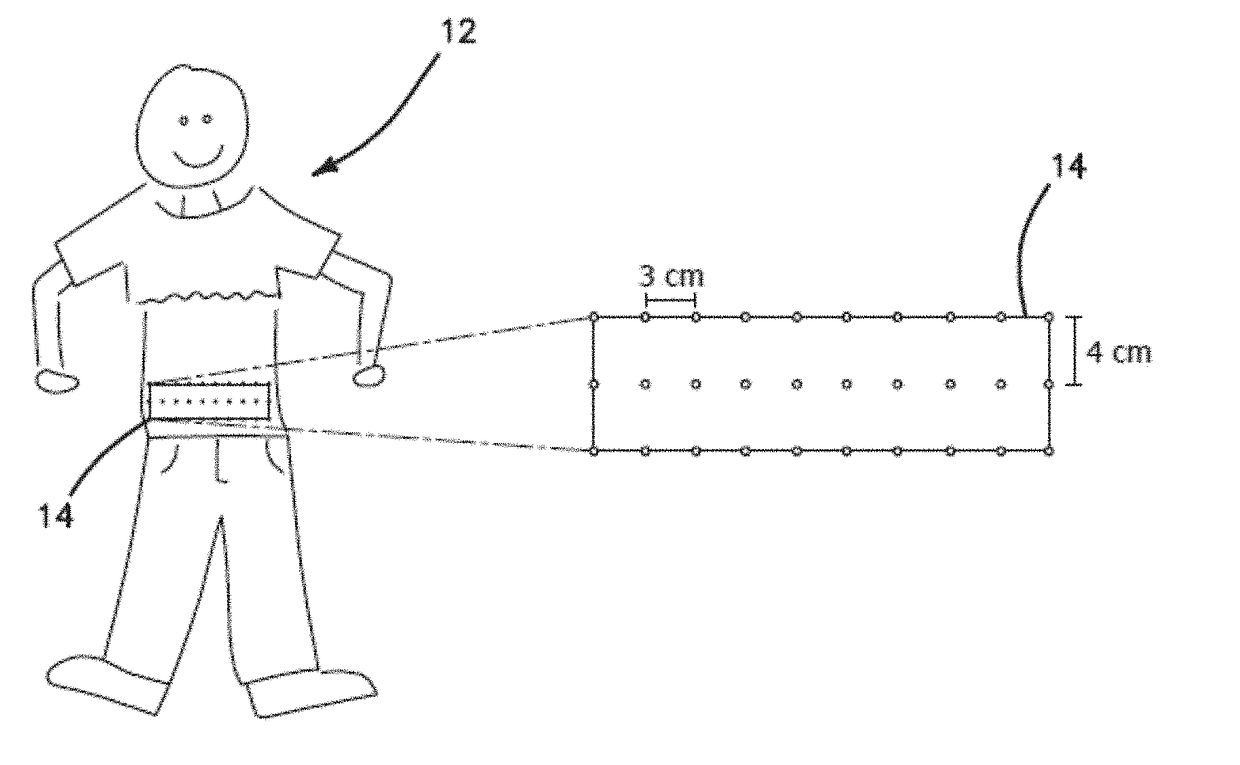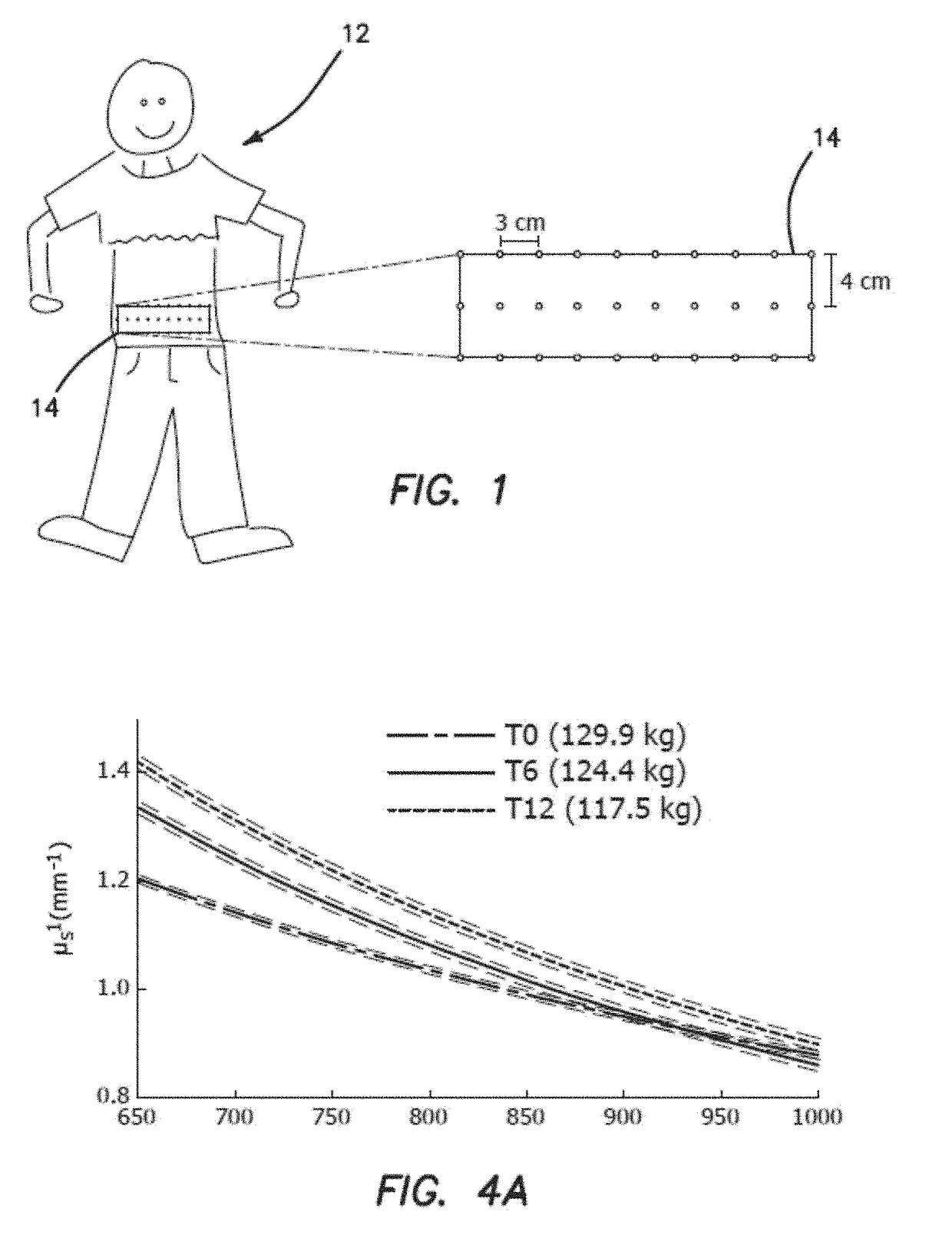Predicting Weight Loss and Fat Metabolism Using Optical Signal Changes in Fat
a technology of optical signal and fat, applied in the field of medical diagnostic and biomedical optics, can solve the problems of inability to assess the structure or function of fat (adipose tissue), no widely used clinical methods for physiology in humans, and no non-invasive tools available to measure changes in fat (adipose tissue) structure or function in vivo, so as to reduce the incidence of obesity-related complications, prolong life span, and enhance white at sirto expression
- Summary
- Abstract
- Description
- Claims
- Application Information
AI Technical Summary
Benefits of technology
Problems solved by technology
Method used
Image
Examples
Embodiment Construction
Method Overview
[0040]We are presenting for the first time the use of a quantitative, non-invasive optical spectroscopy technique for measuring dynamic changes in AT structure and metabolism in vivo. Our technique requires multiple wavelengths of light in the near-infrared (650-1000 nm). Using these wavelengths of light, we illuminate adipose tissue and analyze light that returns to a photodetector. Our analysis of the return signals allows for the calculation of absorption and reduced scattering coefficients (μa and μs′) at each wavelength. The obtained μa and μs′ values allow for quantification of biomarkers and indices which allow us to measure fat composition and metabolism. For example, we are able to determine the concentration of oxy- and deoxy-hemoglobin, the fractional water and lipid content, and information about the size distribution of light scatterers in the adipose tissue. We are not limited to this information, however, and our technique is sensitive to any unique abs...
PUM
 Login to View More
Login to View More Abstract
Description
Claims
Application Information
 Login to View More
Login to View More - R&D
- Intellectual Property
- Life Sciences
- Materials
- Tech Scout
- Unparalleled Data Quality
- Higher Quality Content
- 60% Fewer Hallucinations
Browse by: Latest US Patents, China's latest patents, Technical Efficacy Thesaurus, Application Domain, Technology Topic, Popular Technical Reports.
© 2025 PatSnap. All rights reserved.Legal|Privacy policy|Modern Slavery Act Transparency Statement|Sitemap|About US| Contact US: help@patsnap.com



